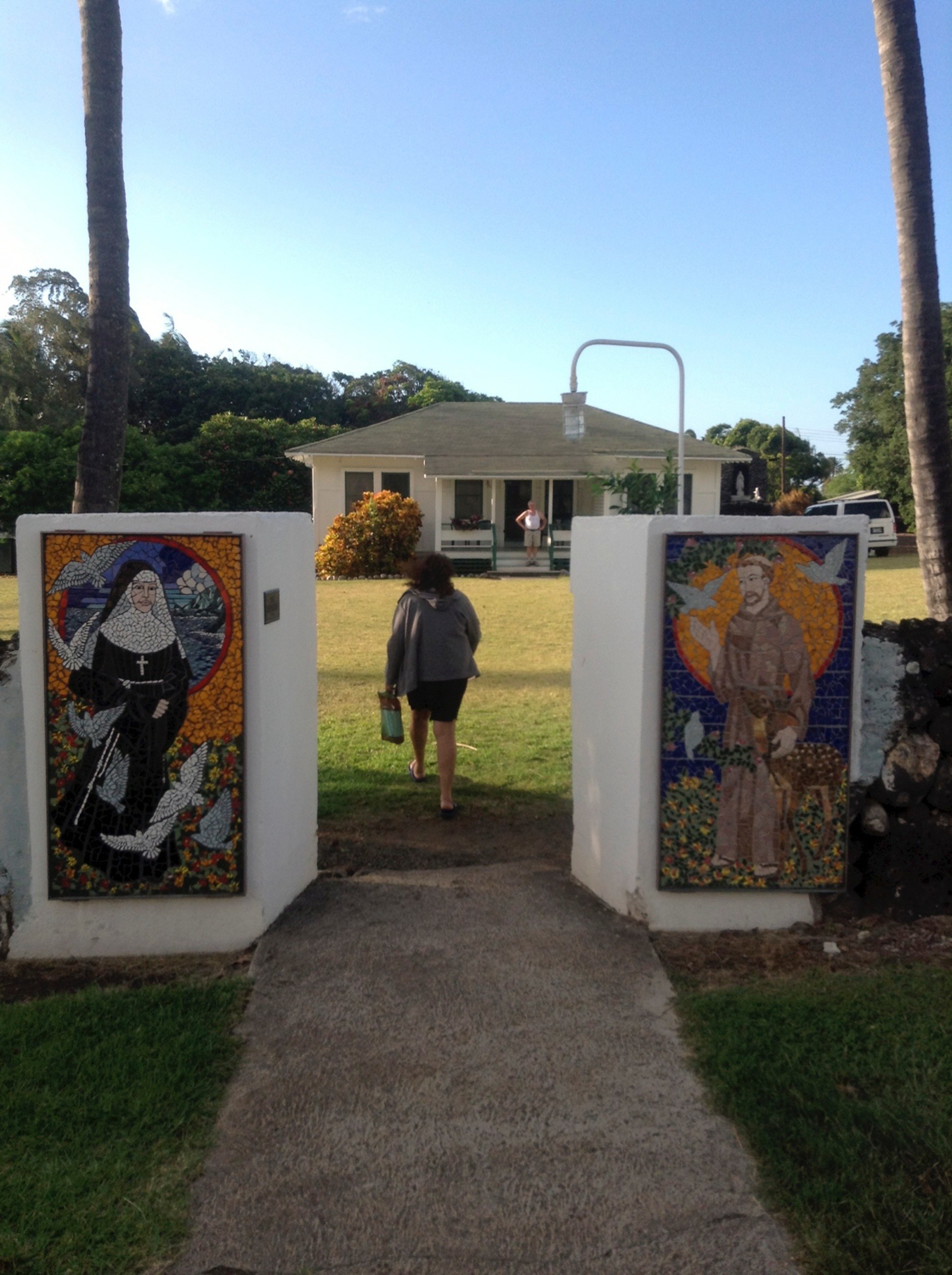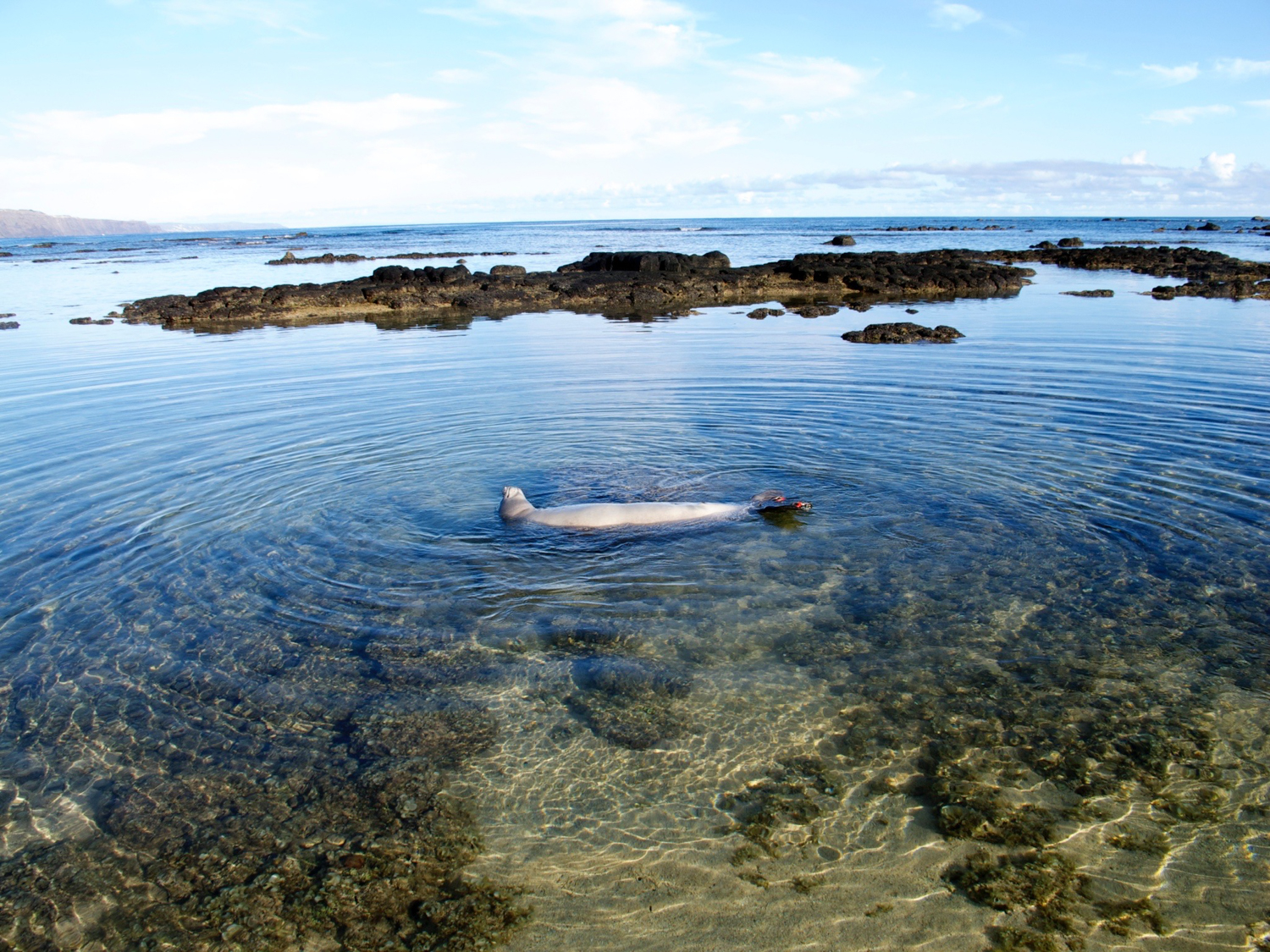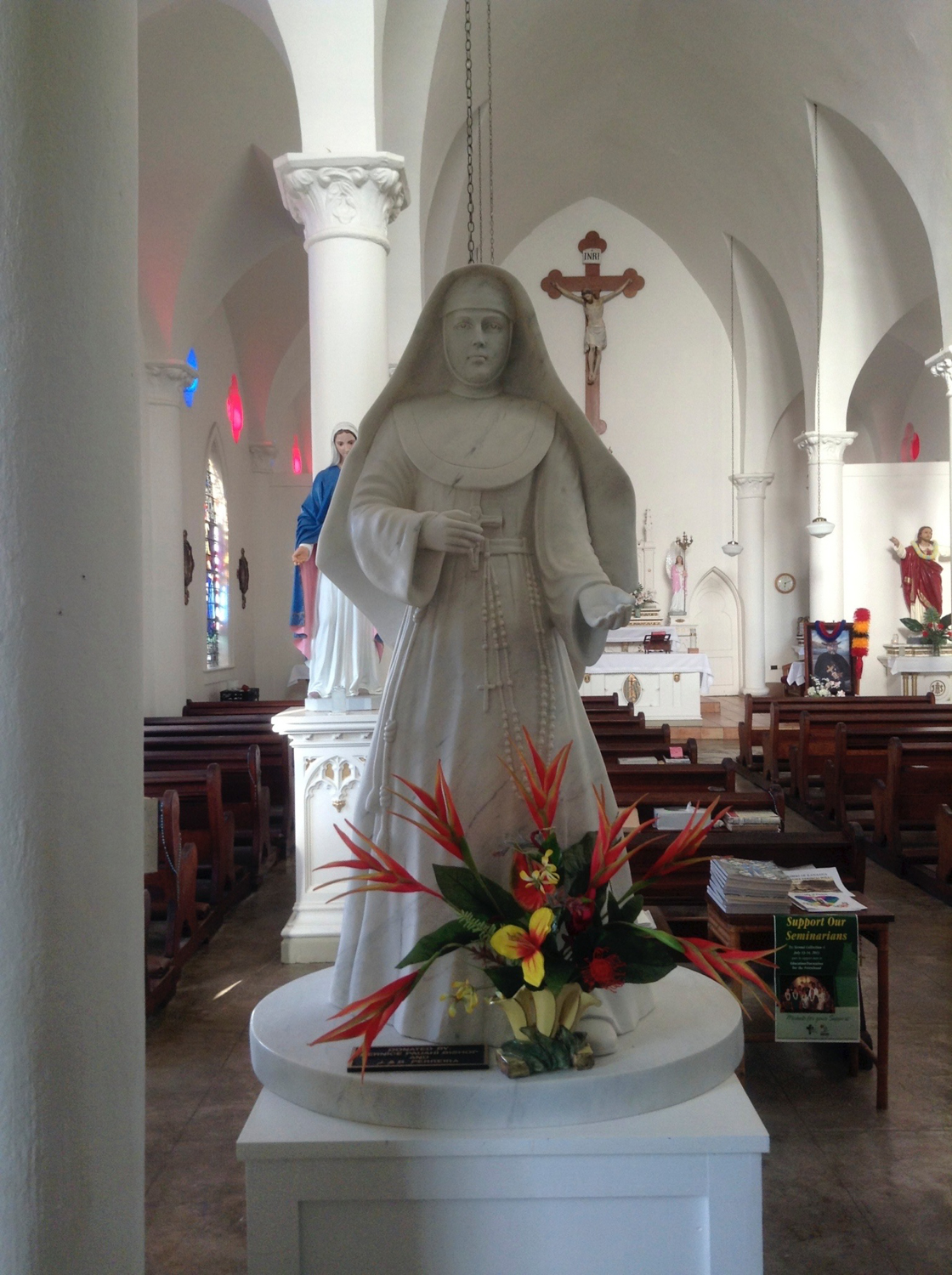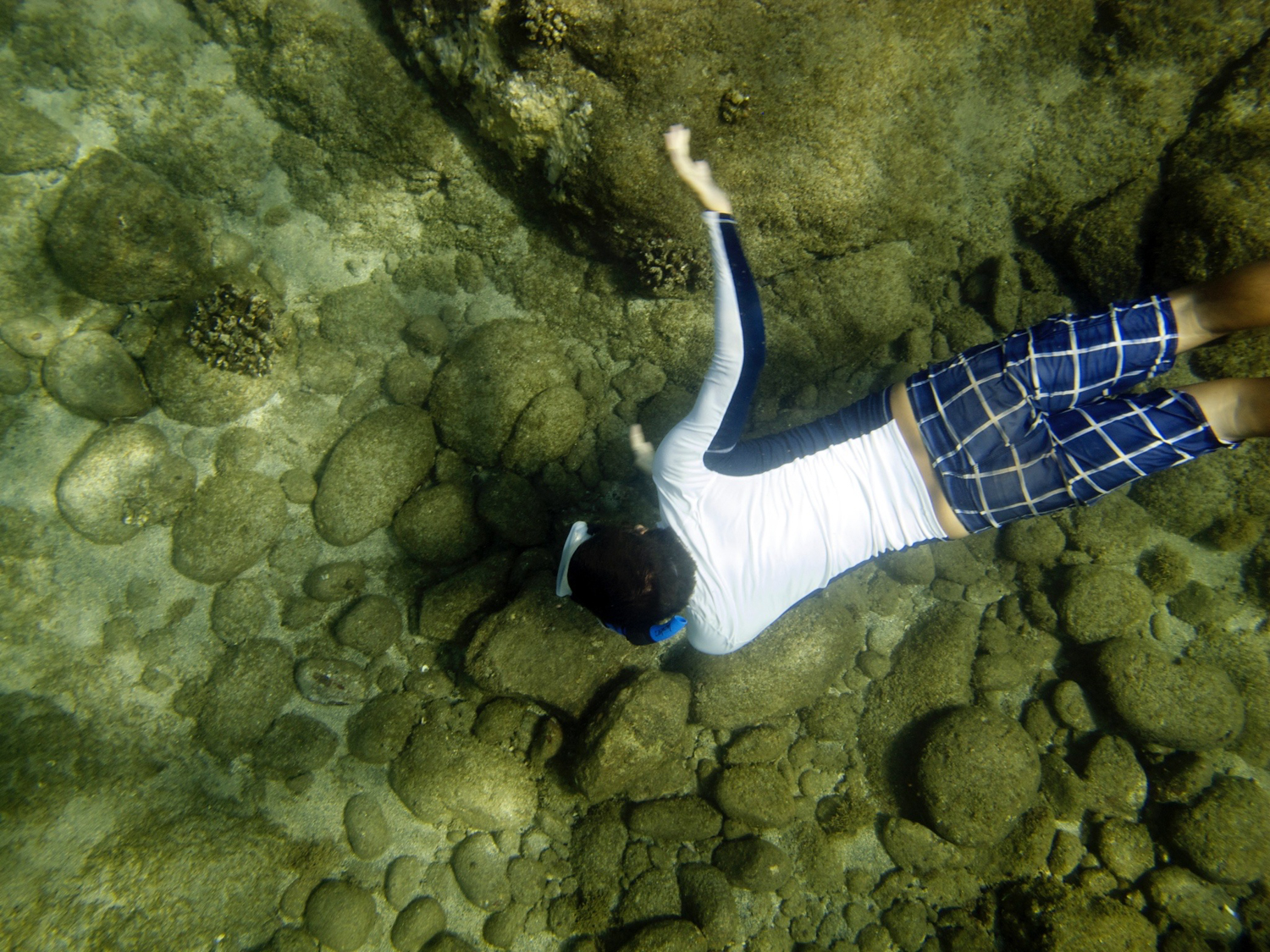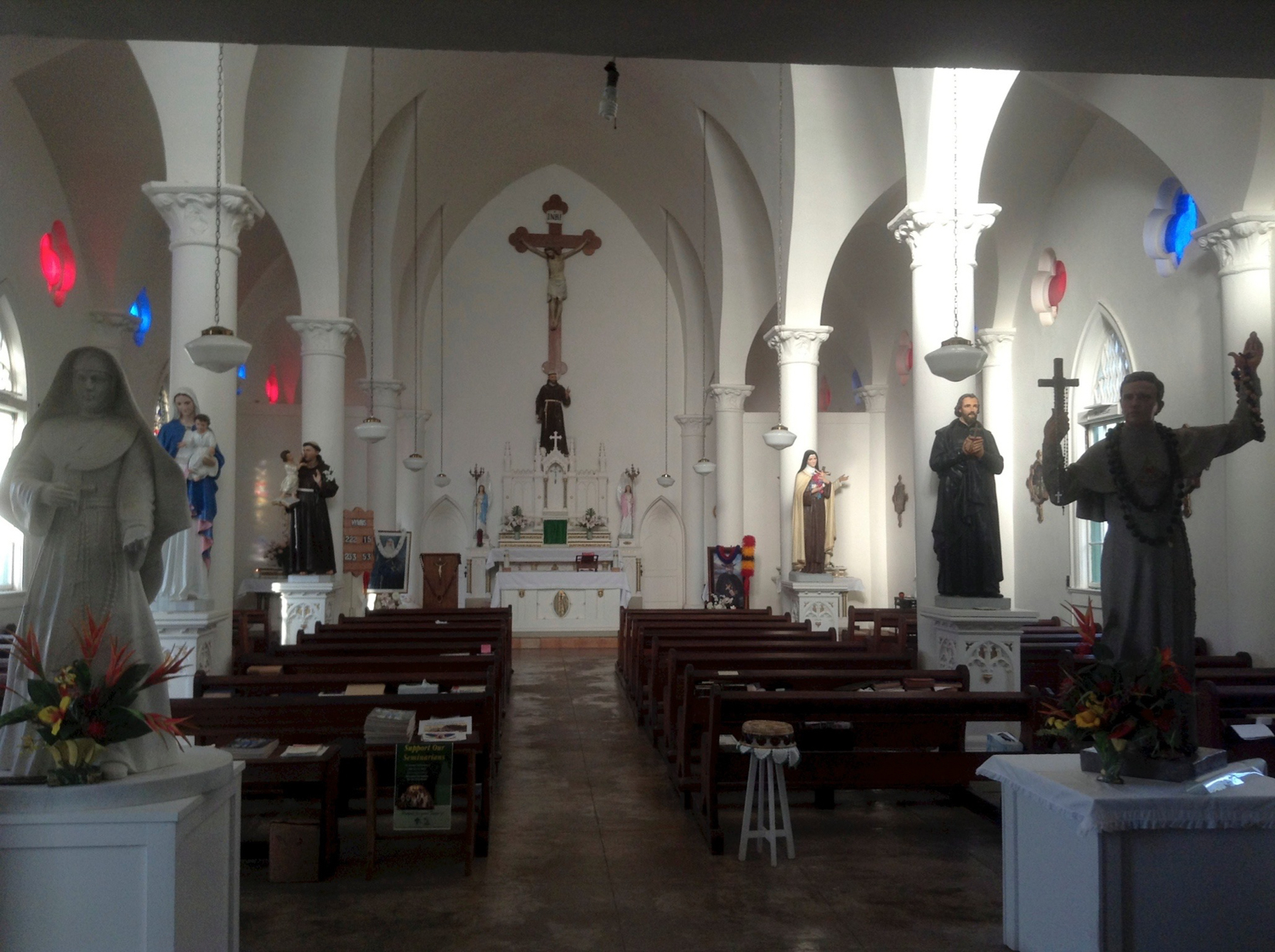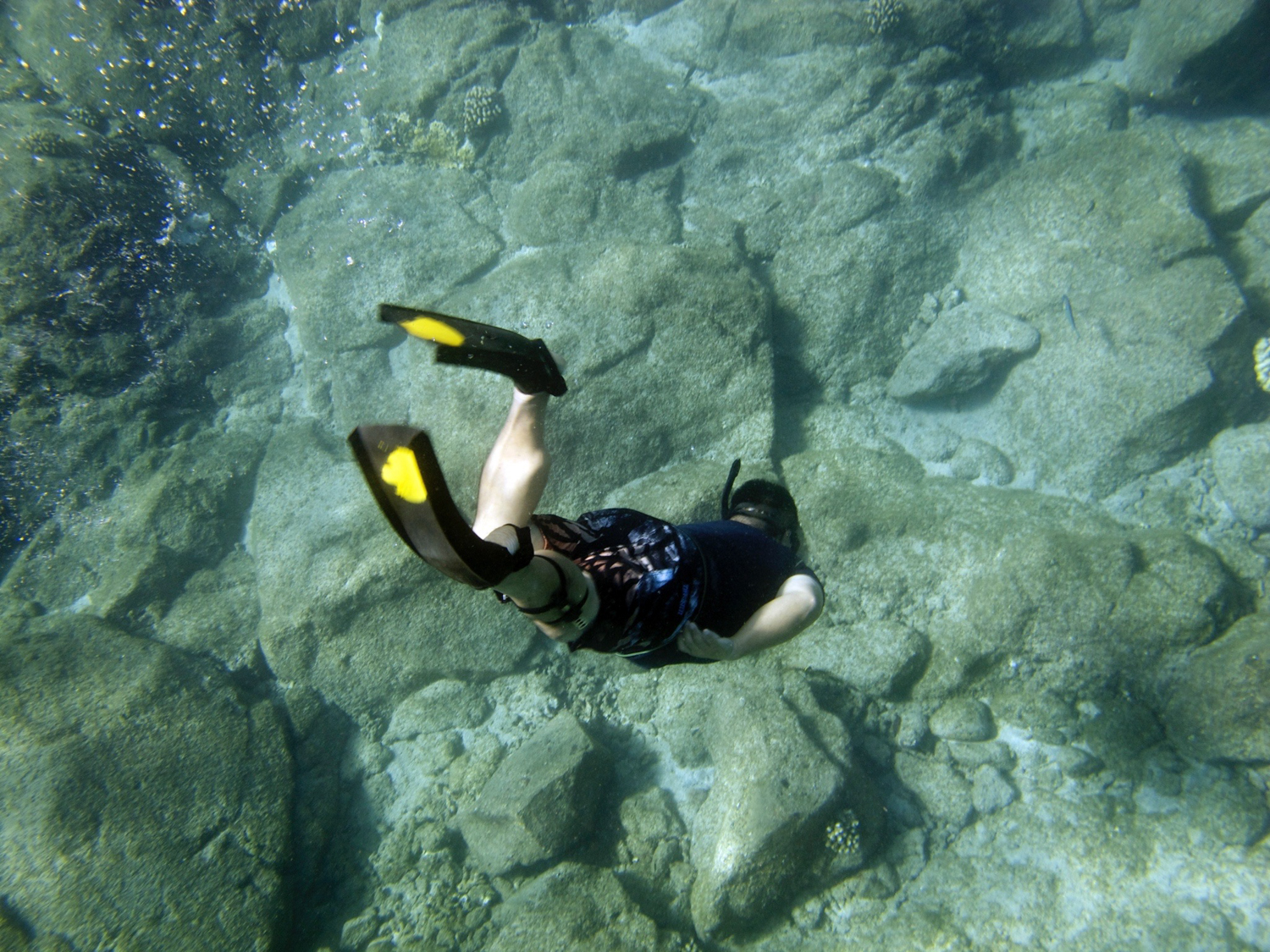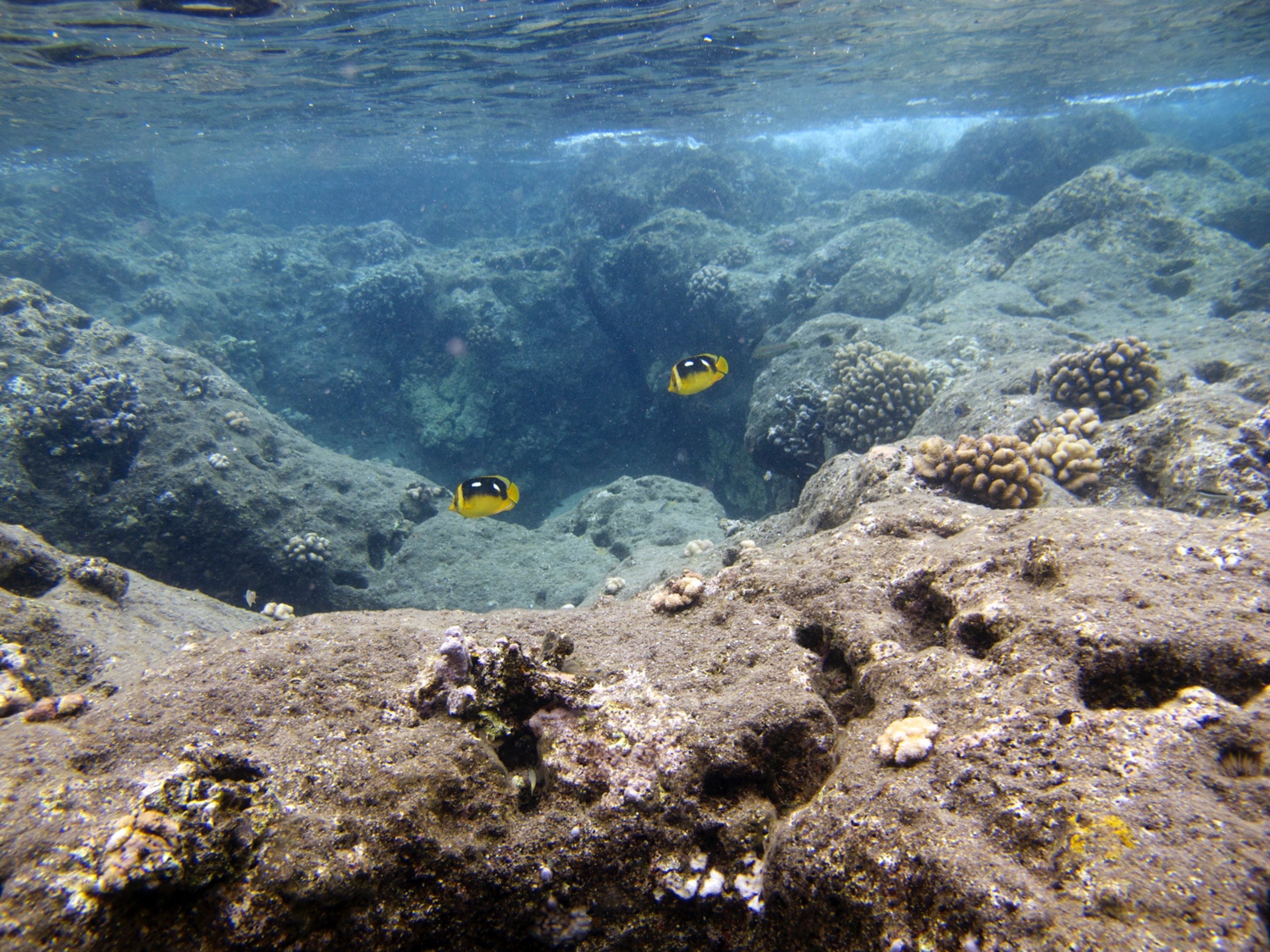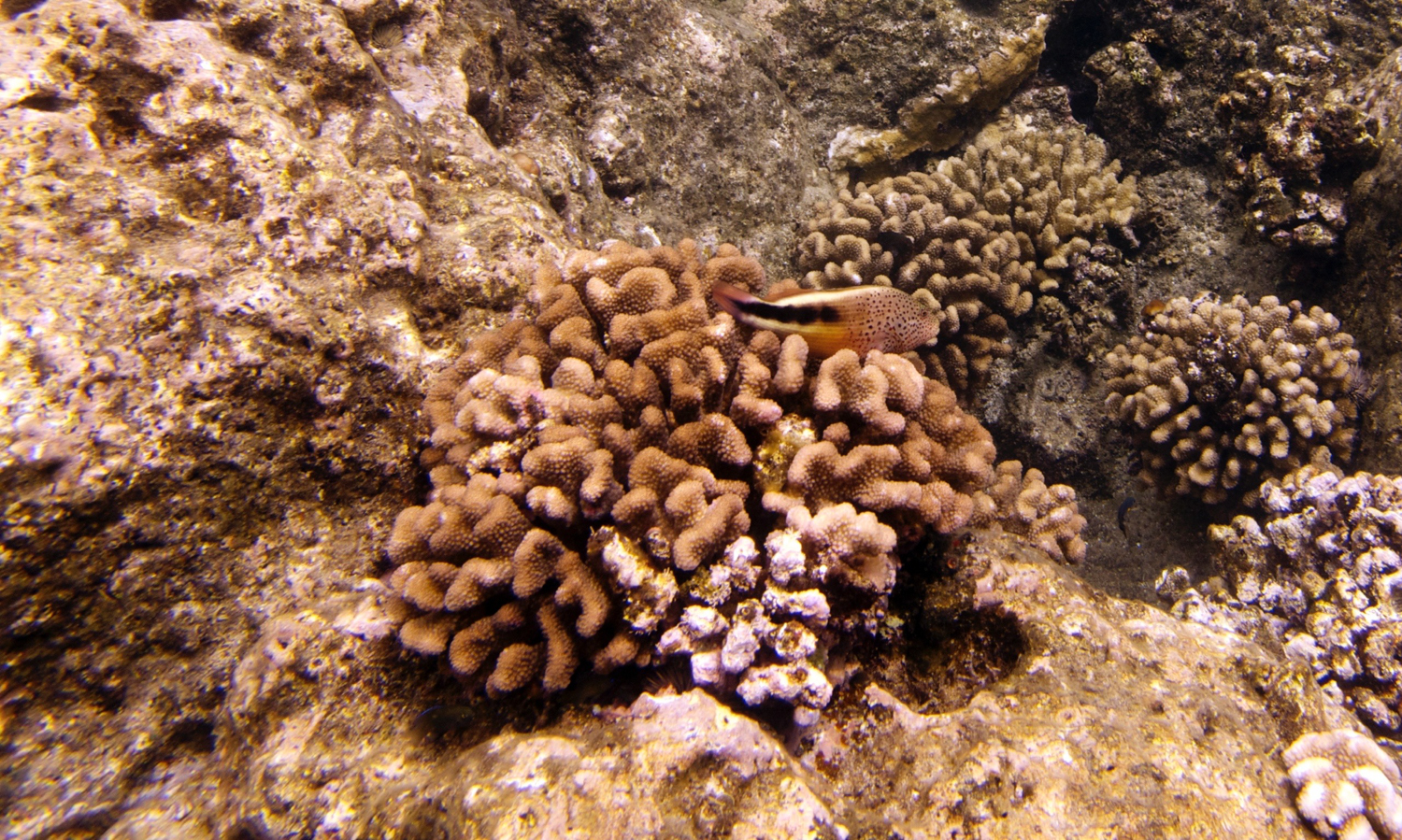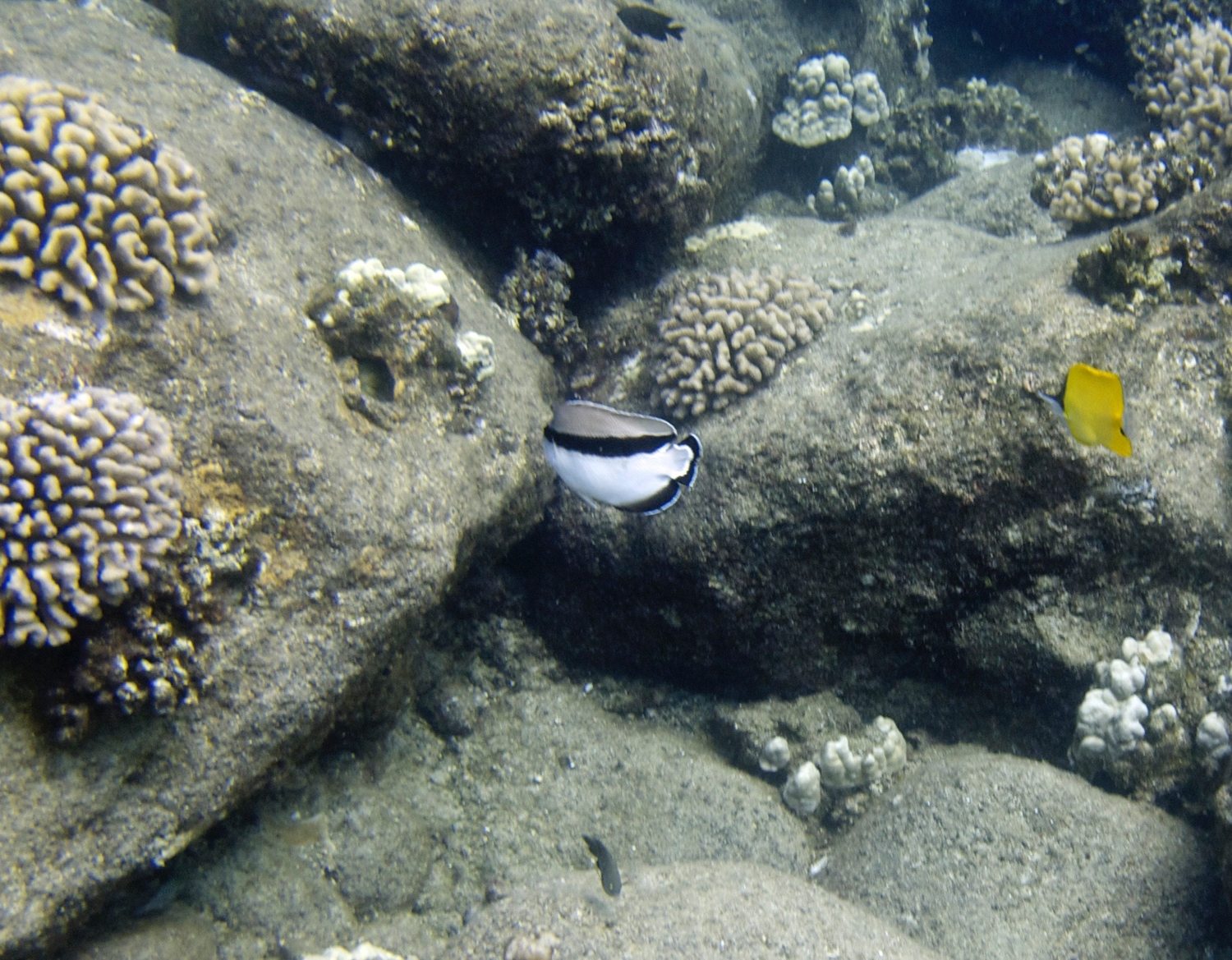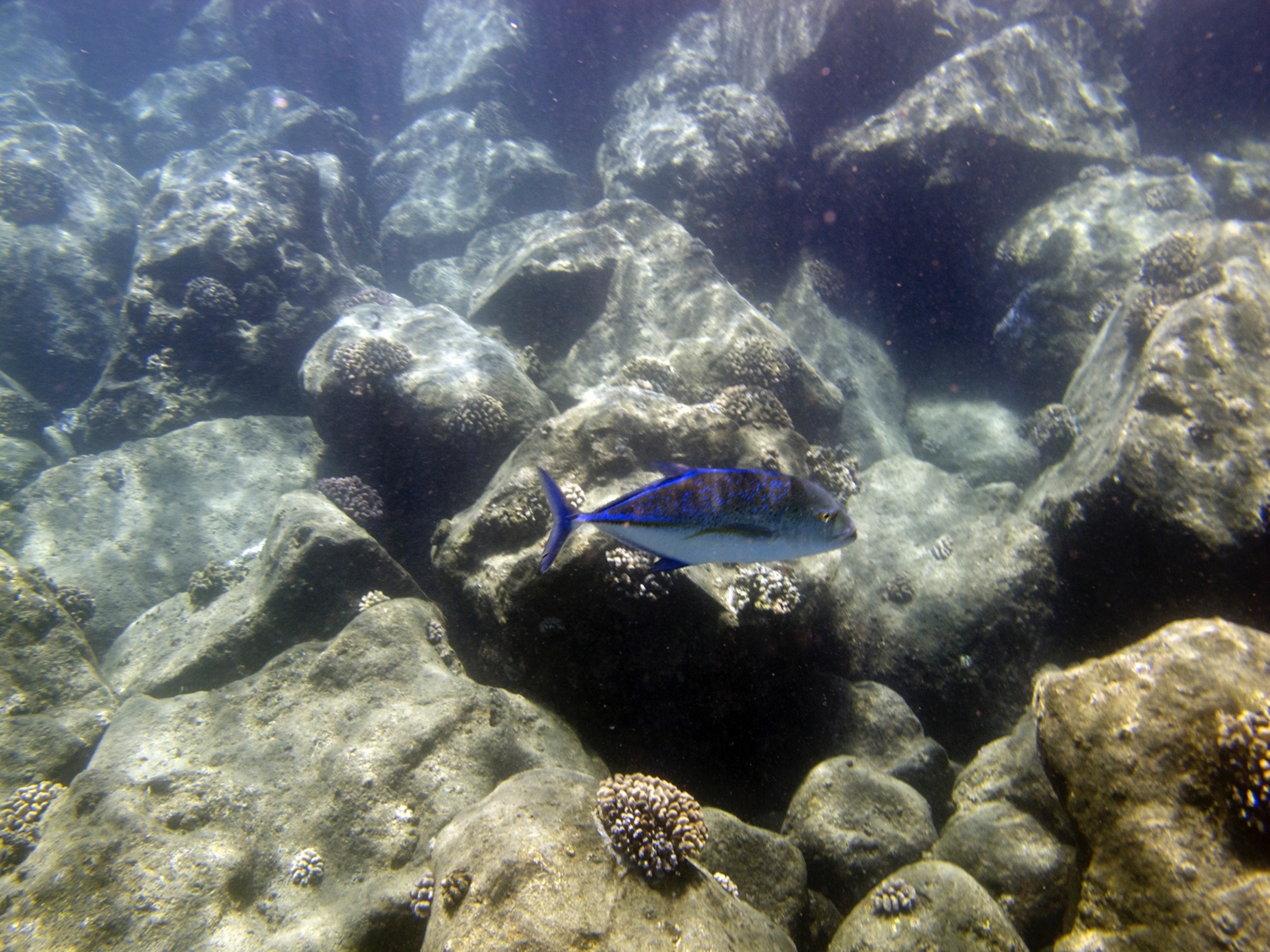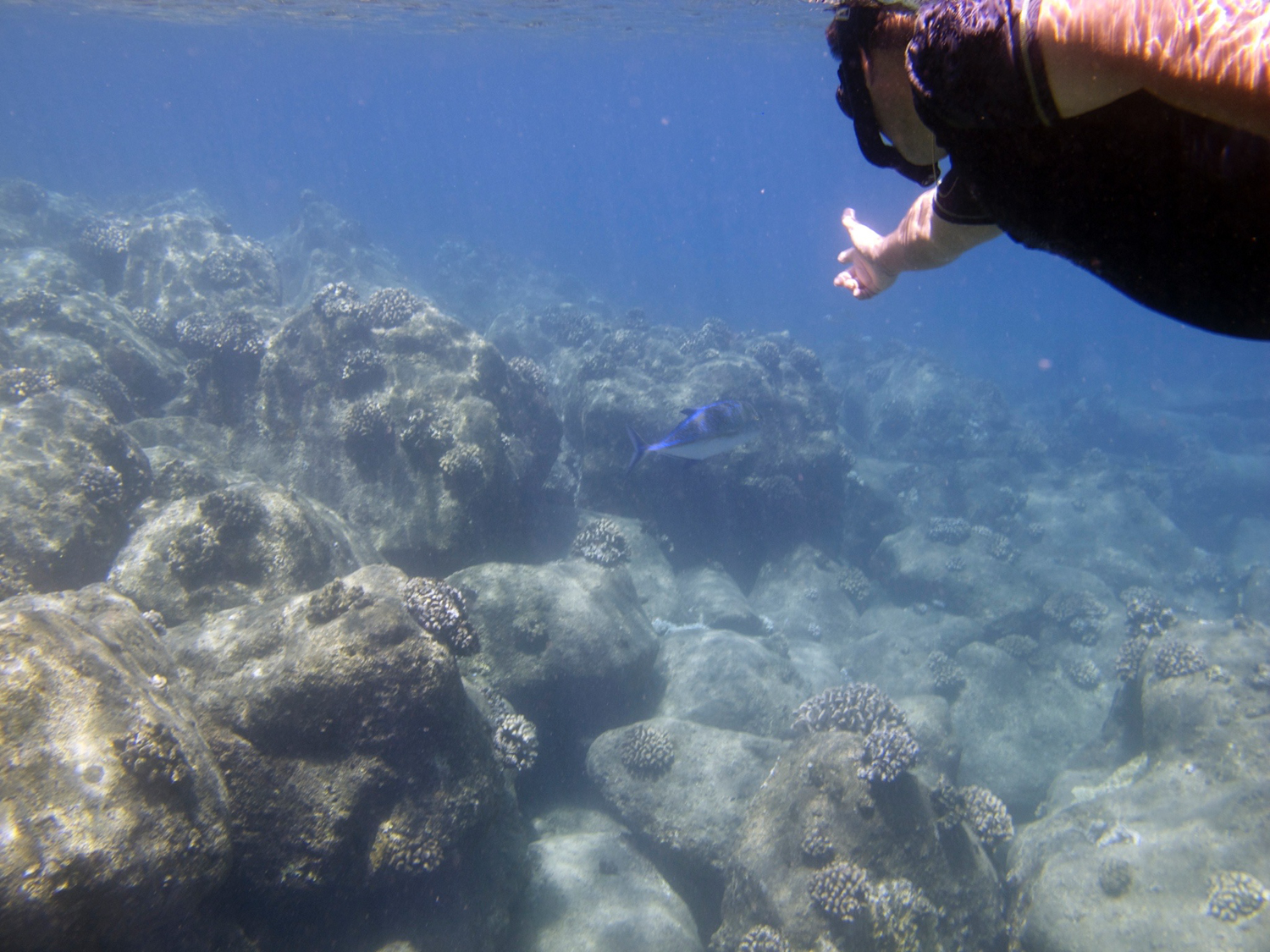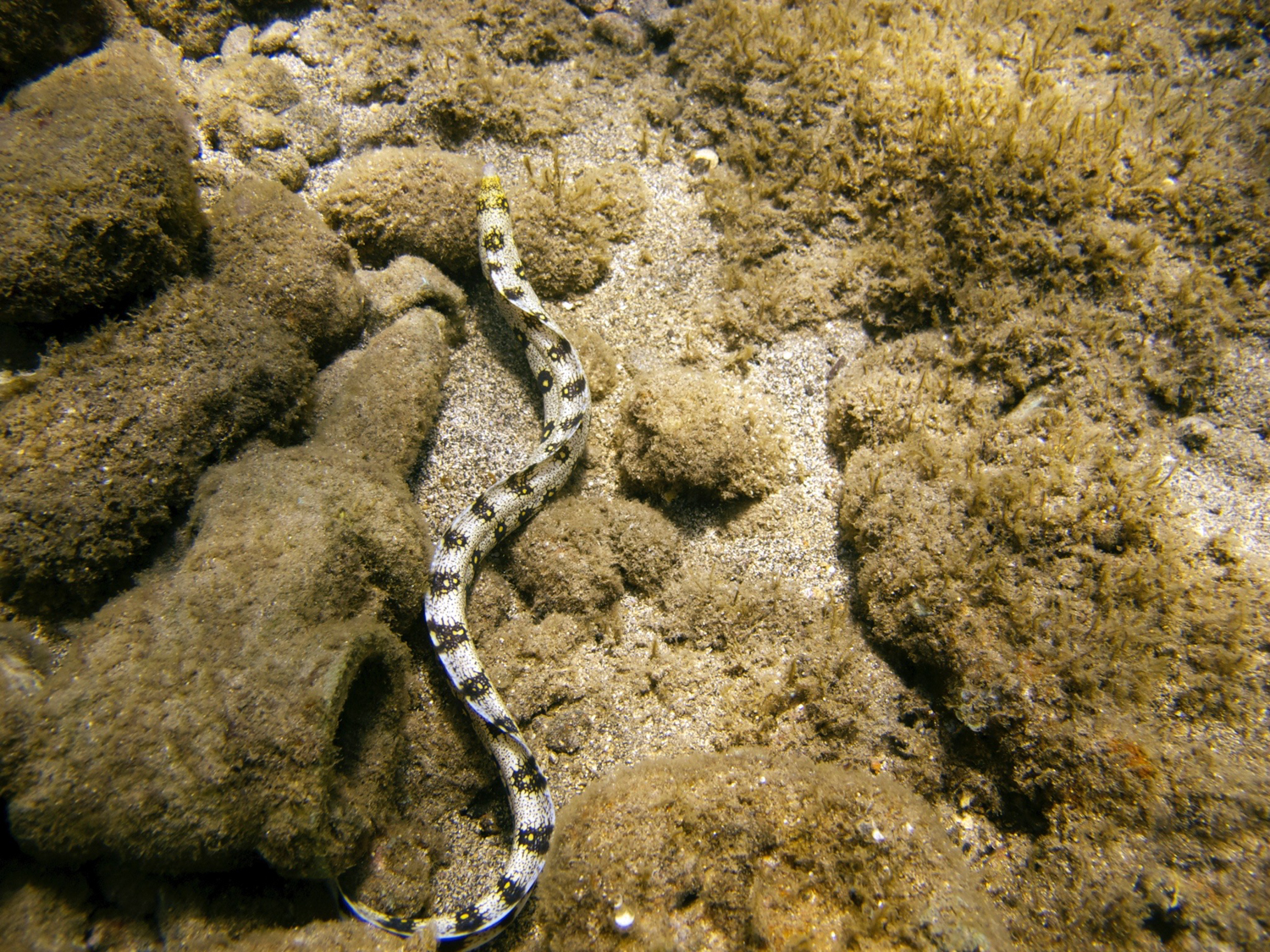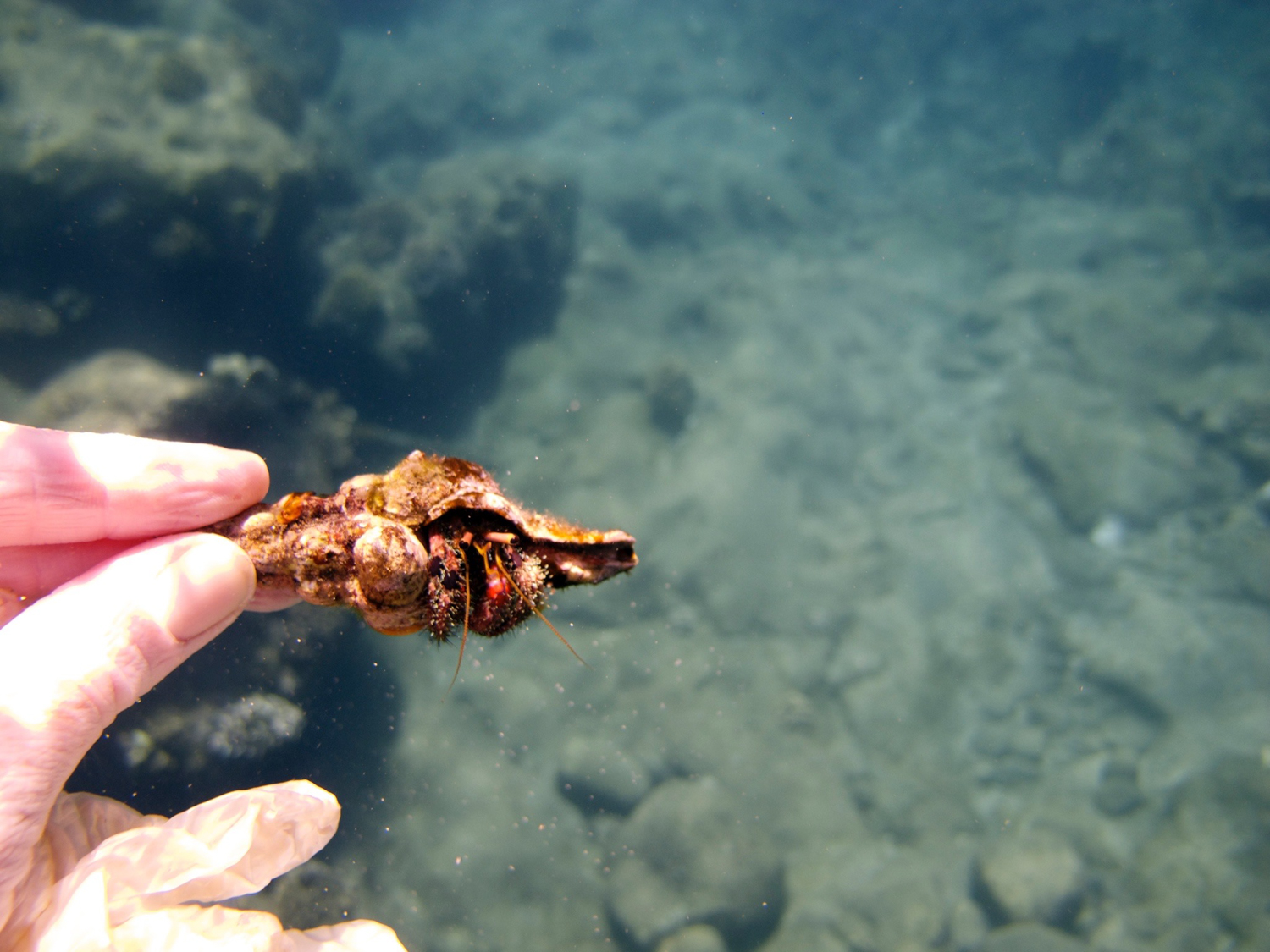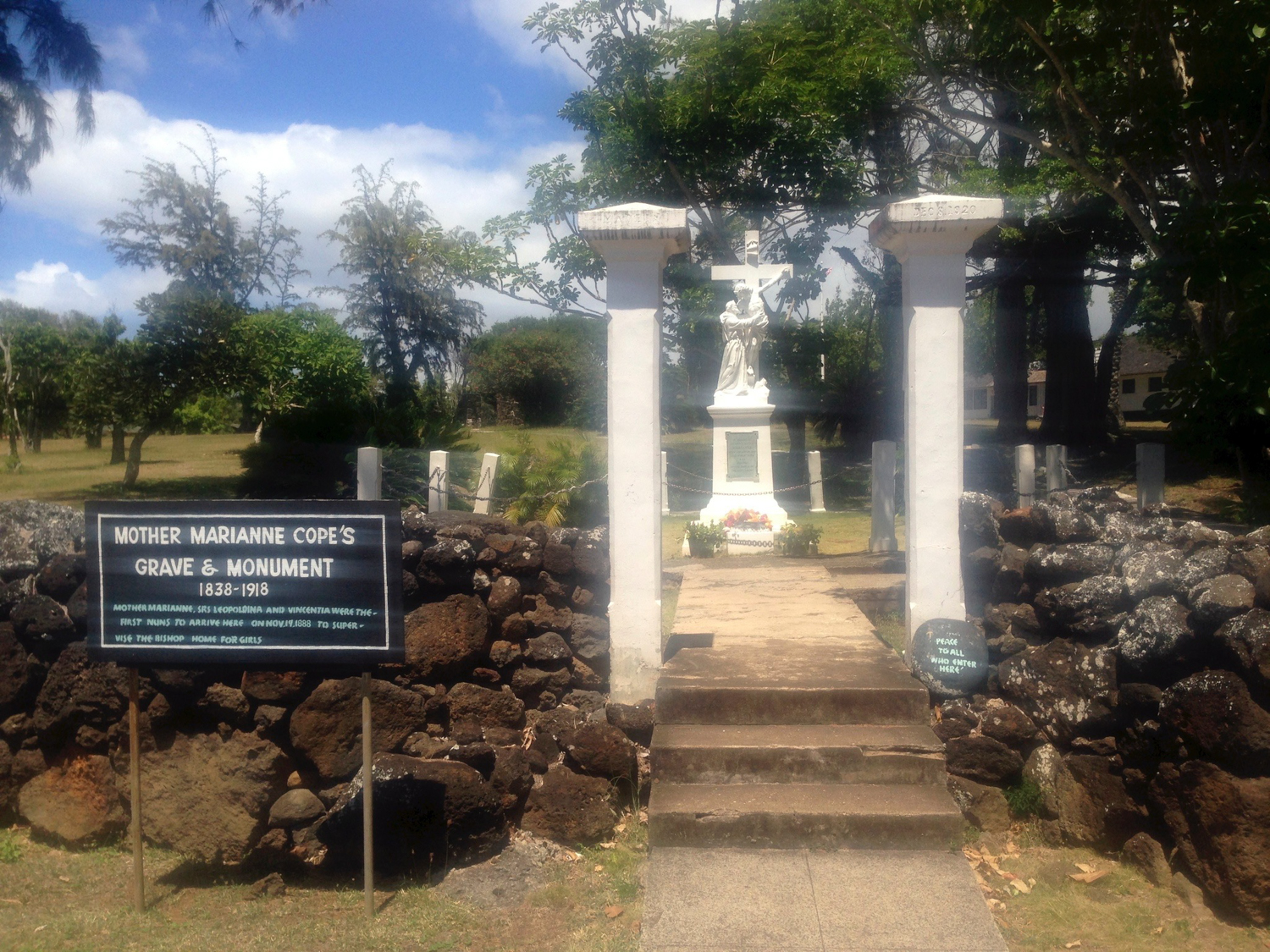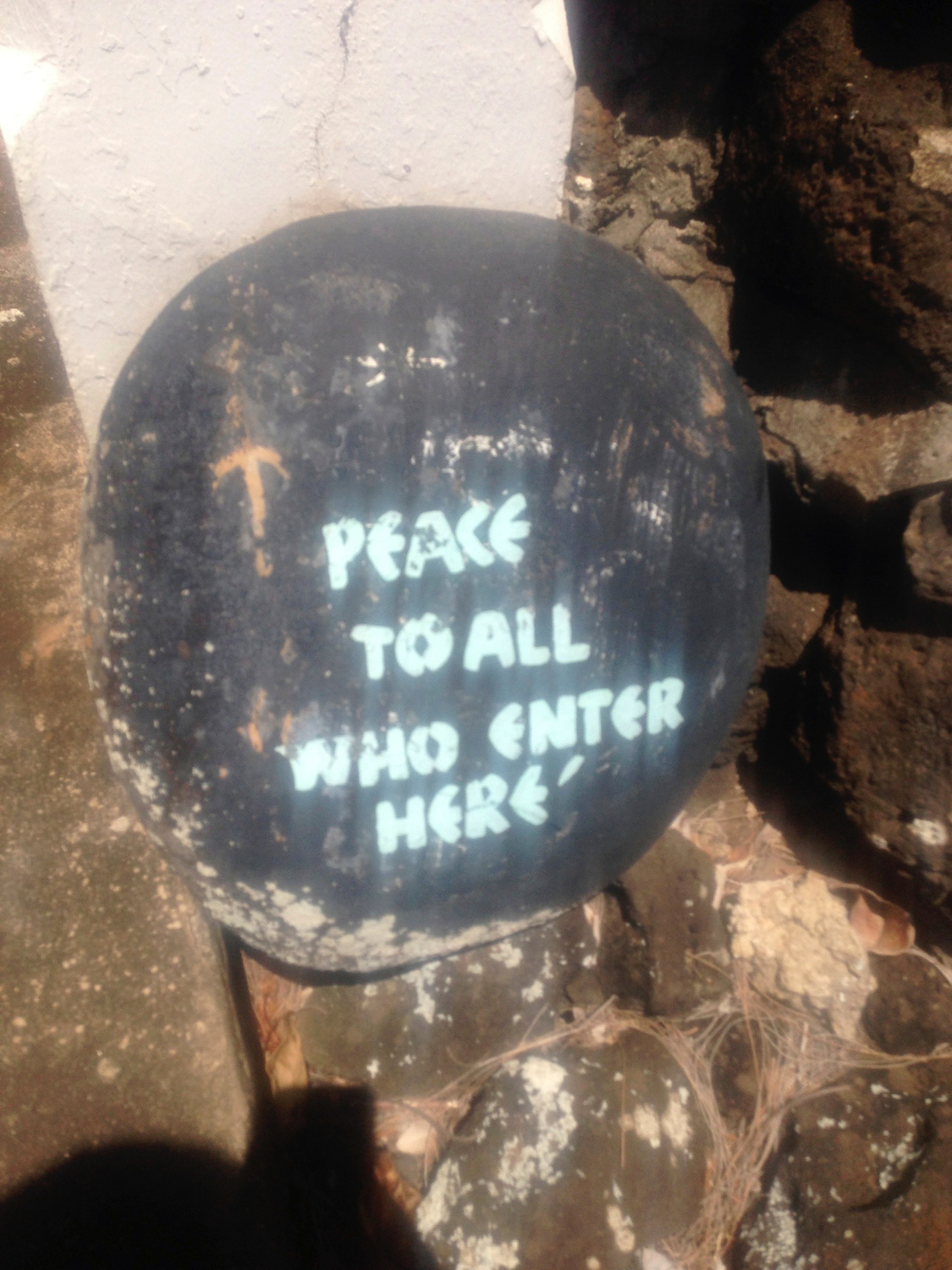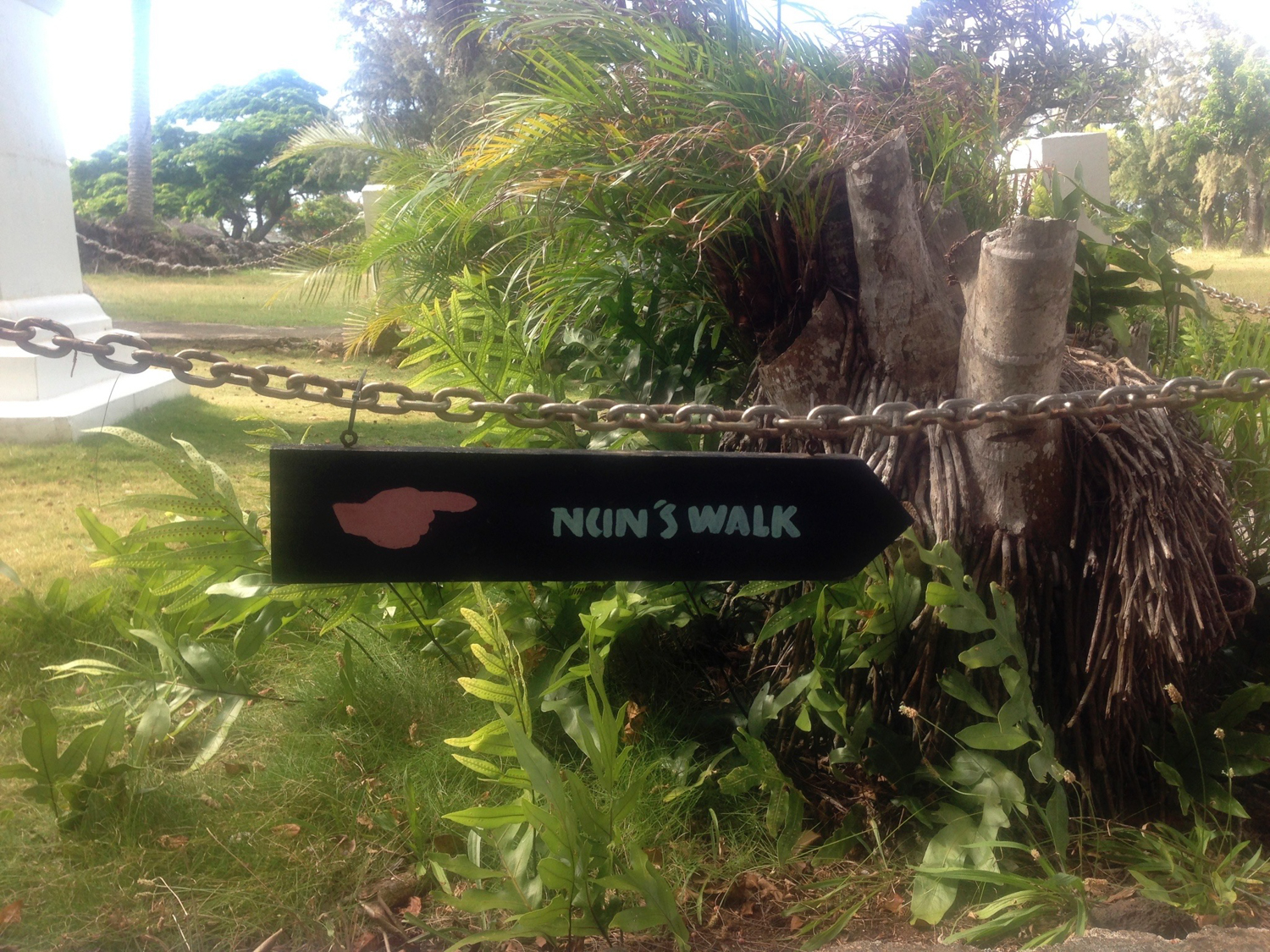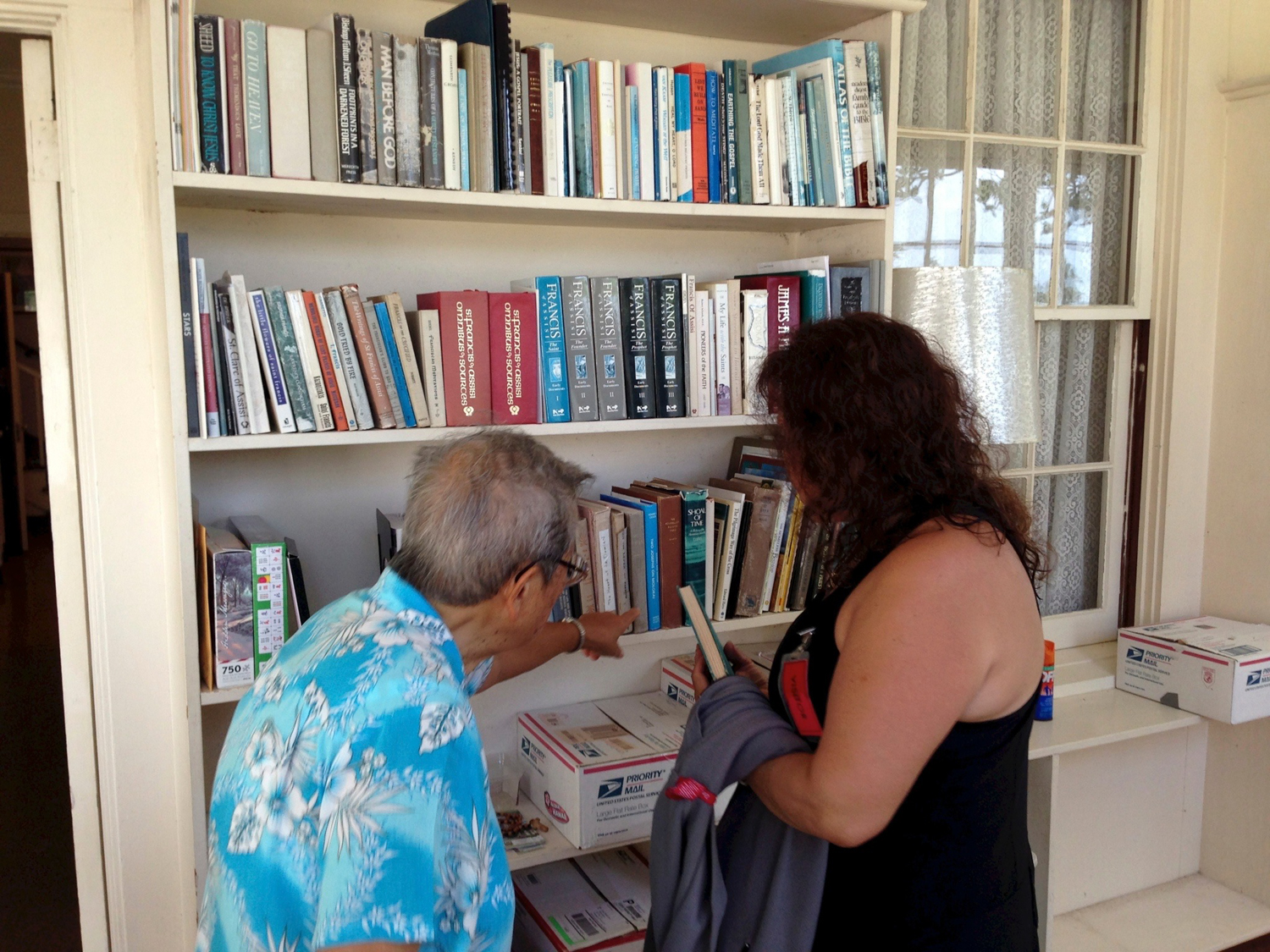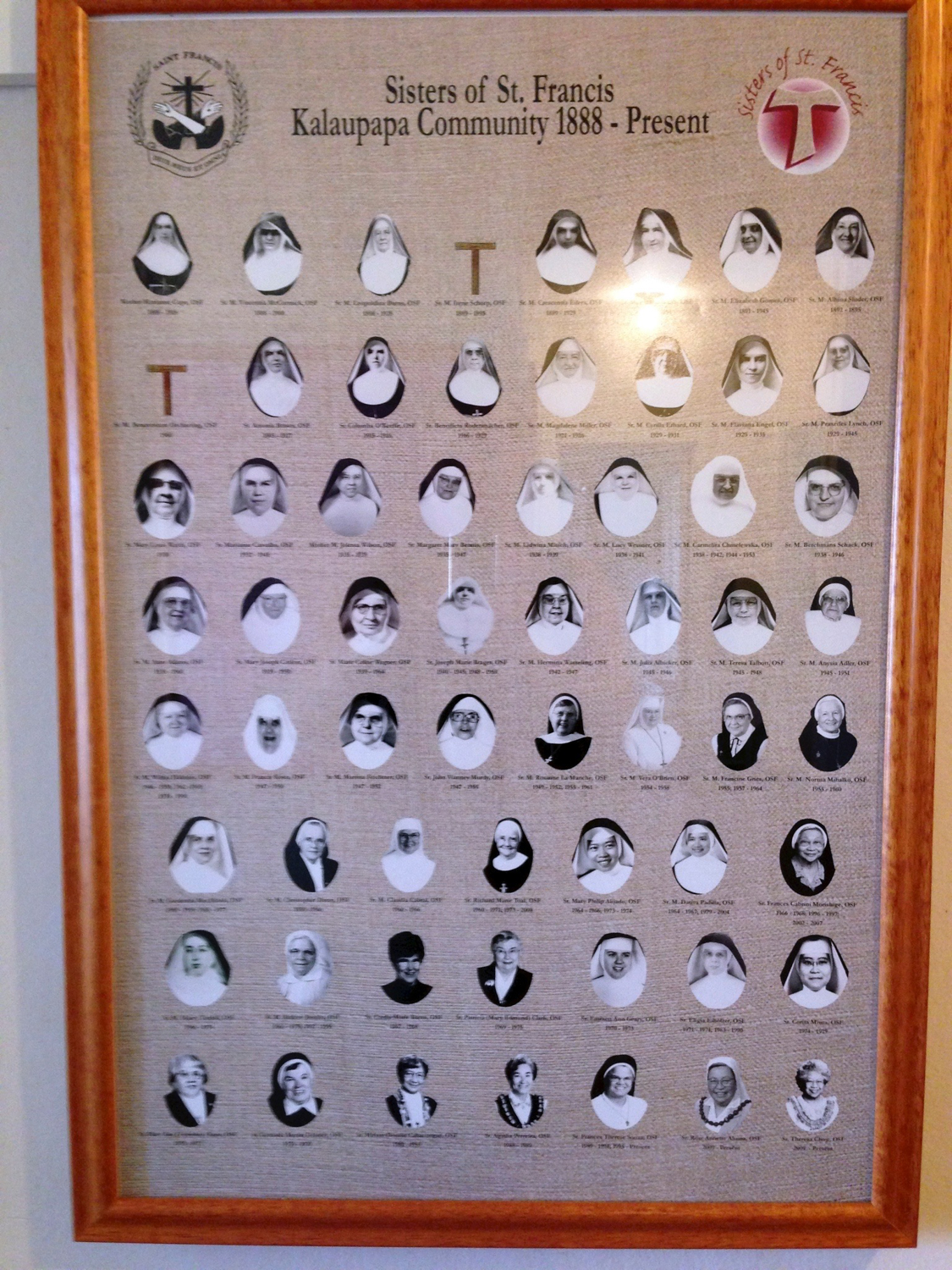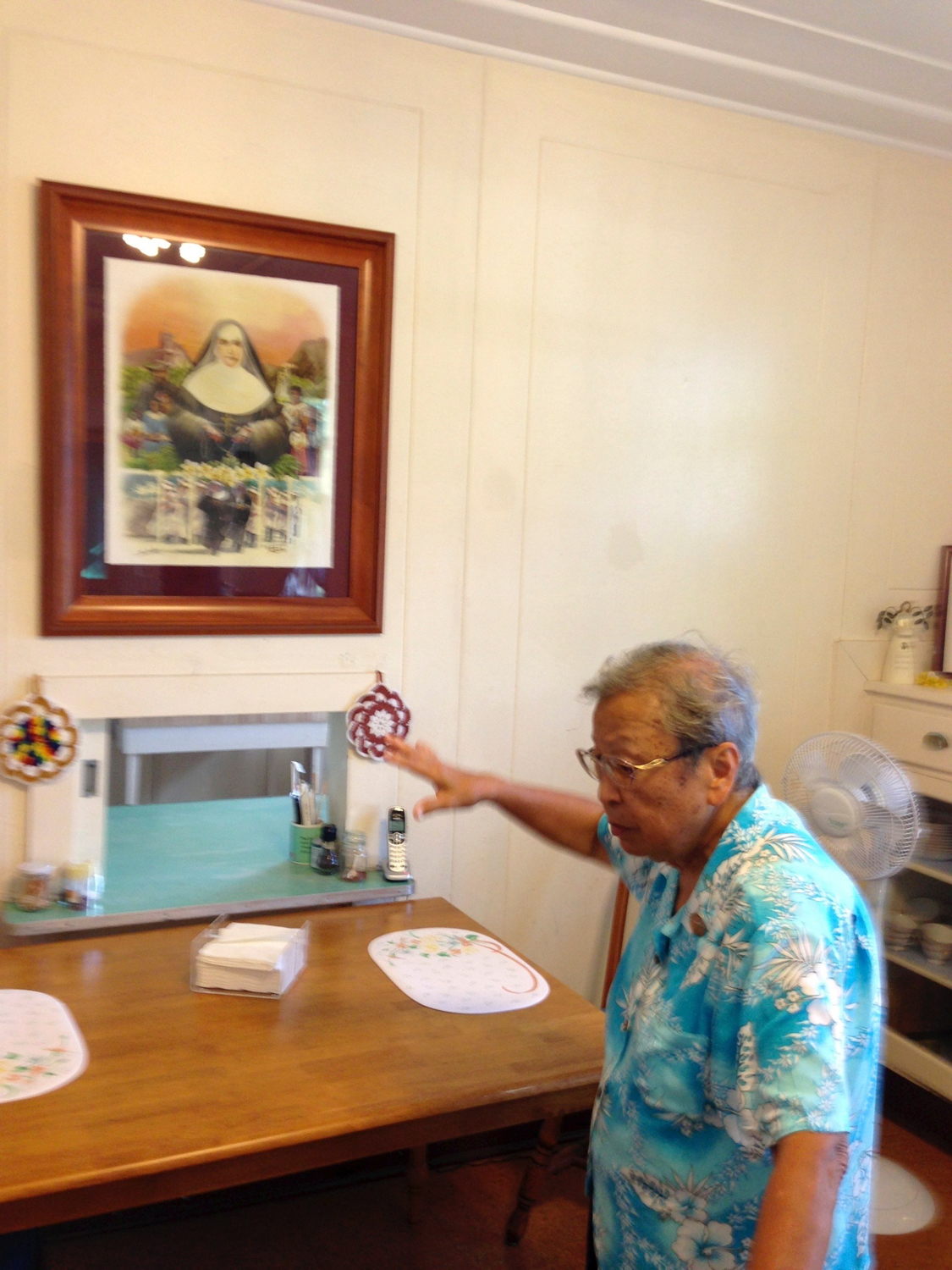Mornings here have settled into a routine. Maria gets up for church again this morning, ever so silently, I take the opportunity to sleep another half an hour and then get my cup of coffee and breakfast. If there is time to start blogging, I blog. If not, then not! This morning I went to the pier to snorkel. Not as much life or excitement as yesterday off the beach. A part of me is yearning to get back out and see those sharks again, if only to get a better picture. From what I understand, they mass up near the gazebo close to the airport. That may be worth a morning's walk. Sister Rose was in the visitor house here putting up updated mass information, and Maria arranged a tour of Bishop House for later in the day.
Later in the morning, I got together with several others to go snorkel from the pier to the black sand beach. Geronimo led us after a giant cannonball entry from the pier (can you just picture someone who is named Geronimo yelling Geronimo? He can't, so he didn't!
We snorkeled and free dove along the route to the beach, seeing ulua, lobster, butterflyflish, goatfish, and other assorted fish. No sharks, though. As Gernomino and I were exiting the water, Mari asked us if we had spotted the monk seal under water. We hadn't but I saw him heading up the beach, so Geronimo said to take off and that he would meet me at the pier. No dice, though. As my companions here would say, "Da buggas wen' fas'!" That's ok, though. I saw a bandit angelfish, a snowflake moray, and two enormous ulua, all of which are on the camera. I sweat that the angelfish came up to kiss me (or the camera).
So I snorkeled for about 3 hours! And am now paying the price. I sit here writing with an enormous sunburn on one spot only - the back of my thighs. Nowhere else! This is going to put a little crimp in my style.
Aunty Erma had to go back to Oahu today. She had been complaining of a lot of pain in the eye in which she had had lens replacement done. Yesterday, she got sunscreen lotion in her eye, which is what she thought was the source of the irritation. The pain intensified last night to the point where she called her ophthalmologist. We are glad that she did, it turns out her stitches came out, and they brought her back into emergency surgery. I will continue to hope that she mends well, and that she is able to return tomorrow for the big bingo day.
I must confess to a 30 minute siesta after eating a big lunch (3 hours in the water made me hungry). At two, Maria and I left for Bishop House, but Sister Rose and the van were not present. So we went to the library, which was open, to the museum to arrange a tour for Wednesday, and then hung out for a bit and then tried again at 3:30, when Maria saw the van back in the driveway. Sister Rose was already giving the tour to DoraJean and her sister, so we waited. And then we got the full on tour of the chapel and the Bishop House.
Mother Marianne (now Saint Marianne) came to Hawaii in 1883 in response to a plea from King Kalakaua V, and she established Malulani Hospital in Maui, and ran Branch Hospital at Kaka`ako. She also advocated for the opening of the Kapiolani Home for the homeless female children of patients with leprosy (Hansen's disease), who were shunned in their neighborhoods. Sister Rose pointed out that the children of those who were afflicted with Hansen's disease did not have the disease, but they were forcibly separated from their parents and siblings.
In 1887, the government of Hawaii closed the receiving station on Oahu, and all those who were sick were destined for Kalaupapa. In 1888, Mother Marianne arrived in Kalaupapa, taking care of an ailing Father (now Saint) Damien in his last few months. After his death, Marianne was instated as Damien's successor at the Boy's Home. When Brother Joseph Dutton assumed responsibility over the Boy's Home (Baldwin Home), Marianne brought two assistants over to help her with Bishop Home.
While improving women's plight, she advocated for better education, taught the women sewing, landscaping, and brought religious education to patients in their homes. She collaborated with non-Catholics as well, arranging for visits from their pastors. This is a practice that still goes on today in Kalaupapa, according to Sister Rose.
Marianne also, after finding an abandoned infant on the beach that died immediately upon being picked up, created a nursery that was in place for one year. Children would be brought here after birth, and parents could see the children, but not touch them. Seeing how hard this was on the parents, Marianne began the practice of evacuating the children right after their birth. Sister Rose told us that when the runway was originally paved, they found the skulls of hundreds of babies. How difficult a decision could that be? Hawaii is a culture embodied by family. Imagine being faced with the choice to give up your child, or to just let it die out of fear of separation. I cannot imagine having to make that choice. Today no children under the age of 16 are allowed on Kalaupapa - largely because it is feared they will mock the patients - and yet there are hundred here already.
So the boys and girls were on separate parts of the peninsula - how on earth were there marriages, pregnancies, etc? Nature will find its way. Sister Rose said that Aunty Gertie told her that the girls would wait until the lights were out in the convent, and then the boys would come over. They would all get together and go out until very early in the morning, at which time the boys would drop them off. Kids today certainly did not create the process of sneaking out! 😸
Sister Rose showed us the cook's quarters (right off the kitchen, Marianne would let no one but the cook in the kitchen, either), and then the cleaning room area where Marianne's body was reassembled for testing as part of the canonization process. It was hard for the residents to have Marianne's skeletal remains taken away, but the investigative team told them that it was just Marianne's bones leaving, and that her muscles, her organs and her essence remained in the earth at Kalaupapa, and could never be taken away.
I never knew, nor did Maria, that for Bishop Home to be built, graves were razed and/or relocated. How stressful that must be/have been for family members to no longer know where their loved ones rest.
It takes a special calling to serve at Kalaupapa. Sister Rose and Teresa have spent a long time going through the historical records, and have assembled photos of all the Franciscan sisters who served. Decades reflected with pictures of the sisters embodying the varying colors of the rainbow. The further along the decades go, the longer various sisters seem to have served. One served for over 50 years! That is dedication and love. Sisters Rose and Teresa came to Kalaupapa four years ago to serve for three, wound up signing two six month contracts initially, and have been here ever since. What lovely ladies.
Then it was off for ice cream and a beer at the bar here, with a hope to latch on to the wi-fi. And if you've never tried it before, give that snack a treat on a super hot day! It was successful wi-fi pairing, and I had a small chat with Wayne before we headed back to the visitor quarters. We also dropped off cookies with Father Pat, who has been here a year now, and went into the museum to see the statues of Damien and Marianne. The church is filled with statues, but the one of Marianne stands out - simple marble of Marianne in her sisterly uniform. The other statues have color and life, but the dignity in her statue stands out in my mind.
I'm truly not minding being off the grid, it is peaceful and relaxing here, giving plenty of time to read and just be present. Dinner was, as it has been since day one, a loud, boisterous and happy affair. I am looking forward to tomorrow.
